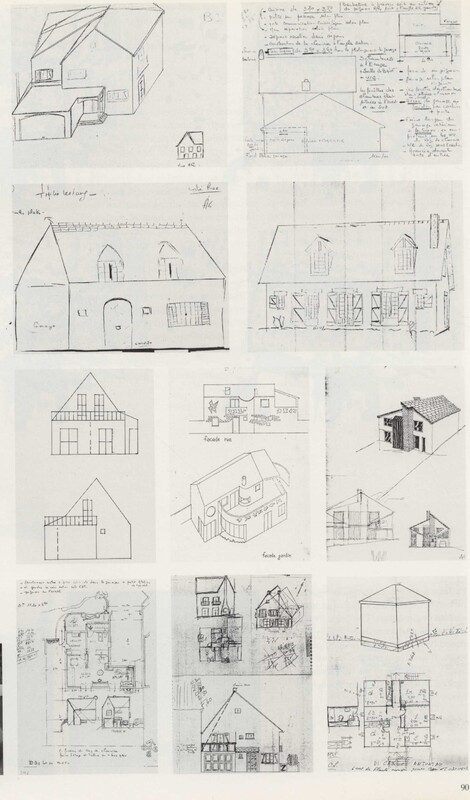Les Vignes Blanches, Cergy-Pontoise
Lucien Kroll was commissioned in 1976 to begin work on the reinvigoration of a residential district in Cergy-Pontoise, and he set about the development of the neighborhood Les Vignes Blanches with the intentions of a collaborative process between himself, the architect, and the actual residents of the neighborhood. The project would be an attempt at manifesting his vision of an architecture of complexity. In her account of Lucien Kroll’s project with Les Vignes Blanches, Nan Ellin explains Kroll’s belief that “the attainment of an architecture of complexity through participatory design will provide the inhabitants with an "instant history," with a feeling of being rooted in a place ("enracine"'), and with a home that pleases them and which they can easily transform according to their evolving needs, tastes, and financial resources” (Elin 179). For the construction of the houses at Les Vignes Blanches, Kroll worked with the residents and allowed them to conceive of their own designs for the houses, as shown in the provided image of multiple sketches produced by residents. In Buildings and Projects, Kroll comments on the collaborative process, asserting “participation of residents cannot be accomplished by mute or incompetent architects without orignial ideas…we were an agency for the ideas of residents, and became responsible for them through osmosis” (Kroll 89). The sketches portray Kroll’s urgency for participation of those actually using the structures which were to be built. The architect can serve as a mode of realization for the needs and designs of the actual inhabitants. Kroll resists architectural authority and imposition in spaces meant for living and use.
While Vignes-Blanches was designed with the intention of providing a mutualistic relationship between the occupant and the architect, the realization of this goal proved more difficult in its execution. Lucien Kroll and his Atelier were awarded a first place prize in a competition aimed at renewing and transforming a dilapidated suburb, and the redesign of the neighborhood was envisioned as a collaboration where the occupants could sketch and design ideal progressions for their homes and the architect would assist in the technical fruition of their desires. Nan Ellin provides historical context for a subsequent stagnation of the project at Cergy-Pontoise, “only three of the forty-three households who ultimately moved into the Vignes Blanches were actually involved in the participatory process,” and future inhabitants chose to live in already designed buildings (Elin 179). Residents were discouraged by the participatory architecture process primarily “because they found it too slow, tedious, and costly” (Elin 179). The resulting neighborhood appears to generally reflect the appearance of an average suburb, in contrast with the collage-like construction of his more successful participatory architectural projects. While Kroll hoped Vignes-Blanches would simultaneously promote the community and the individual, in the suburban context, the two spheres could not co-exist. The transformation of the spaces into the dreams of the residents faced great difficulty because the place at Cergy-Pontoise was already imbued with the culture and setting of a suburban ideal. One resident explained his experience with the participatory architecture to be lackluster, explaining that “market demands, the nature of the construction permit, and the need to harmonize with the surrounding” prevented him from receiving a home which reflected his drawing (Elin 179). In the context of Kroll’s hope for “architecture of complexity,” a culture of commercial ease and the difficulties of bureaucracy discouraged a manifestation of the idea and devolved into a more orthodox neighborhood structure .


